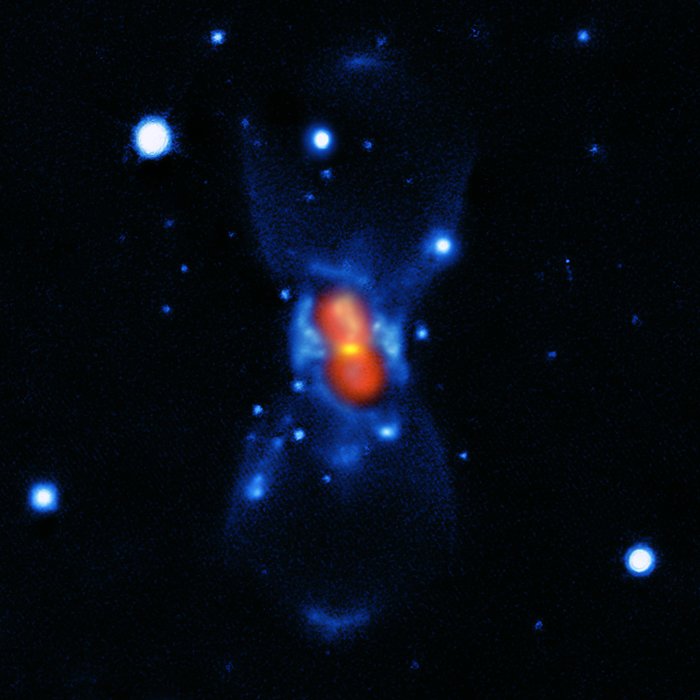The remnant of the new star of 1670 seen with modern instruments
This picture shows the remains of the new star that was seen in the year 1670. It was created from a combination of visible-light images from the Gemini telescope (blue), a submillimetre map showing the dust from the SMA (yellow) and finally a map of the molecular emission from APEX and the SMA (red).
The star that European astronomers saw in 1670 was not a nova, but a much rarer, violent breed of stellar collision. It was spectacular enough to be easily seen with the naked eye during its first outburst, but the traces it left were so faint that very careful analysis using submillimetre telescopes was needed before the mystery could finally be unravelled more than 340 years later.
Oikeudet:ESO/T. Kamiński
Kuvasta
| Tunnistus: | eso1511b |
| Tyyppi: | Havainto |
| Julkaisupäivä: | 23. maaliskuuta 2015 17:00 |
| Vastaavat julkaisut: | eso1511 |
| Koko: | 882 x 882 px |
Kohteesta
| Nimi: | Nova Vulpeculae 1670 |
| Tyyppi: | Milky Way : Star : Type : Variable : Nova |
| Constellation: | Vulpecula |
| Kategoria: | Stars |
Taustakuvat
Koordinaatit
| Position (RA): | 19 47 36.90 |
| Position (Dec): | 27° 19' 1.19" |
| Field of view: | 1.48 x 1.48 arcminutes |
| Suuntaus: | Pohjoinen on 0.2° vasen pystysuuntaan nähden |
Värit ja suotimet
| Kaista | Teleskooppi |
|---|---|
| Optinen hydrogen | Gemini Observatory GMOS |
| Millimetri | Submillimeter Array |
| Millimetri | Atacama Pathfinder Experiment |
| Millimetri | Submillimeter Array |

